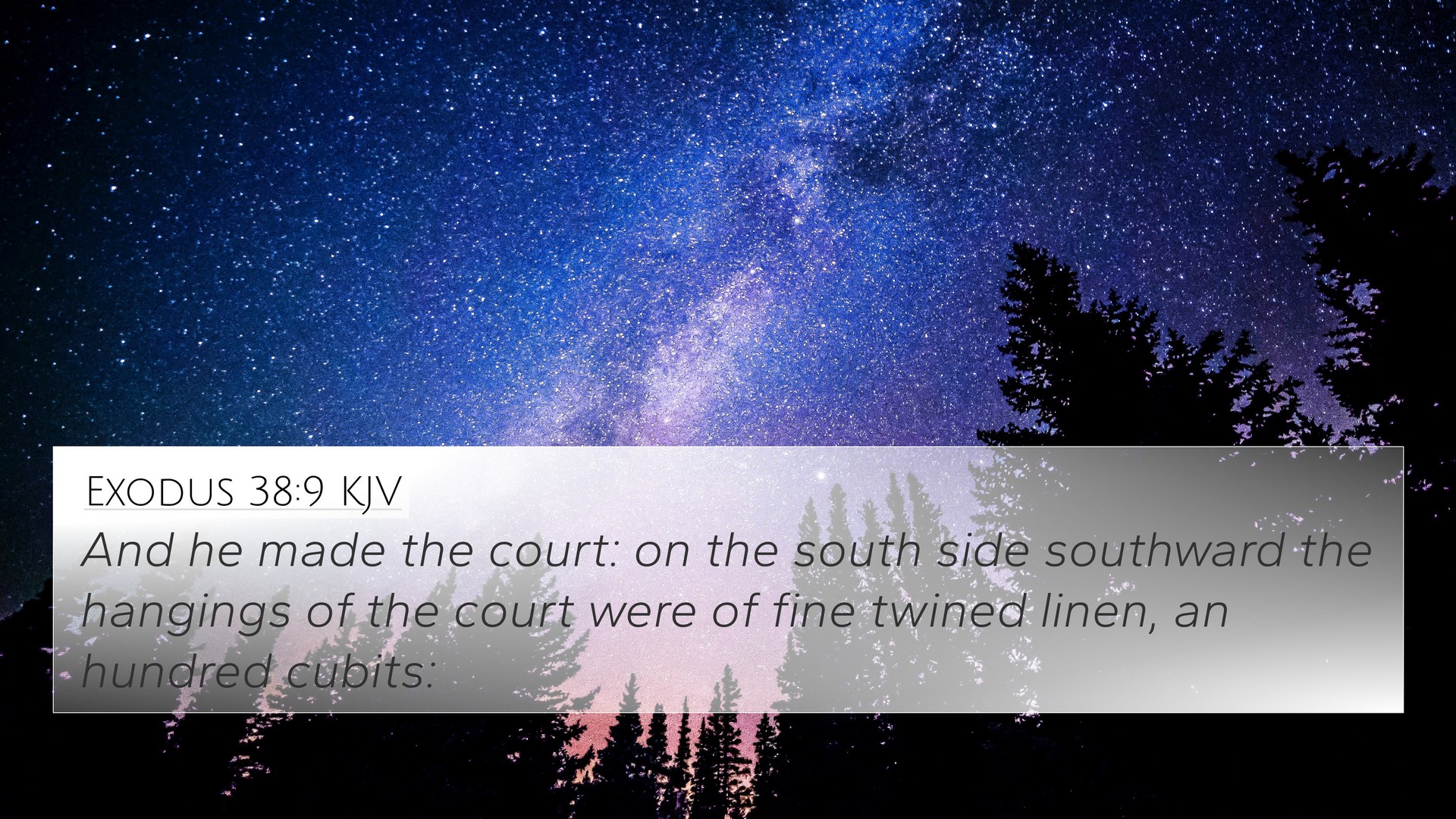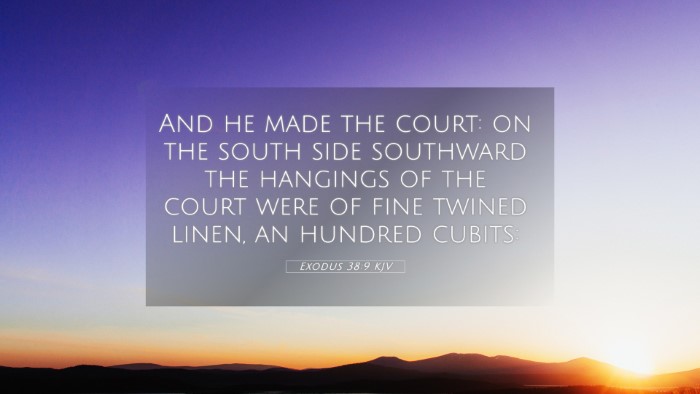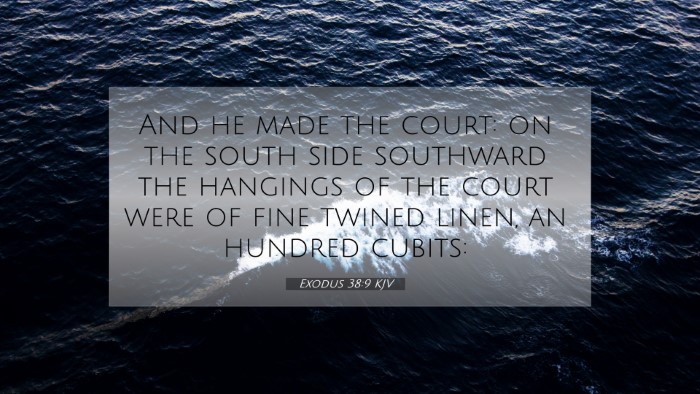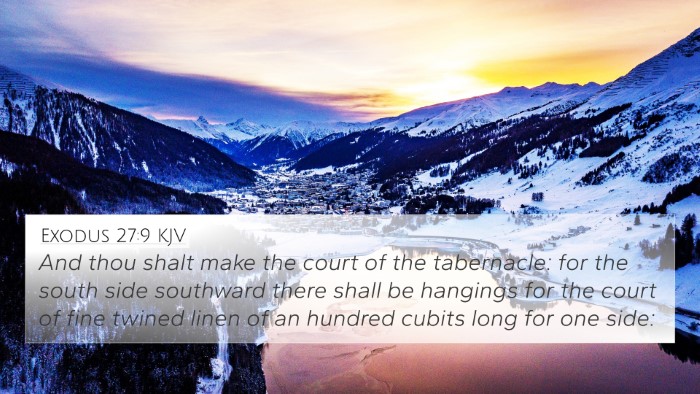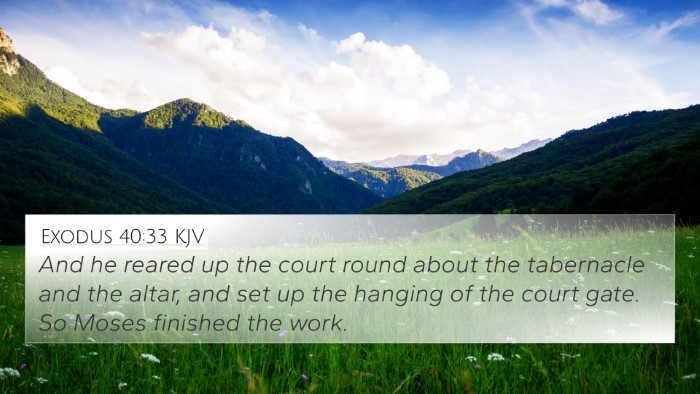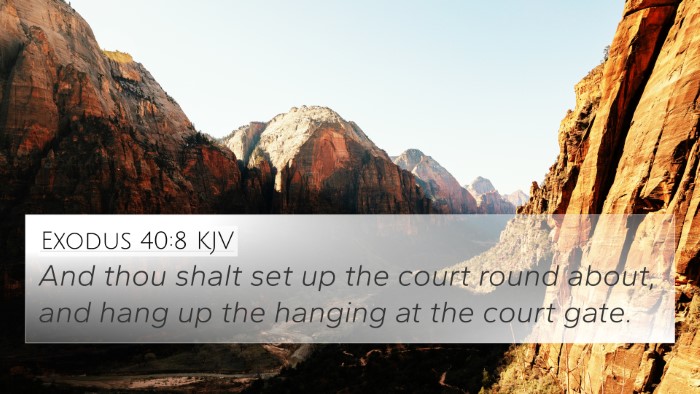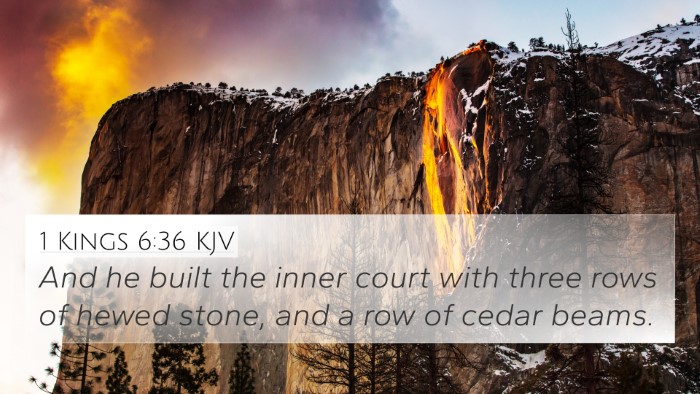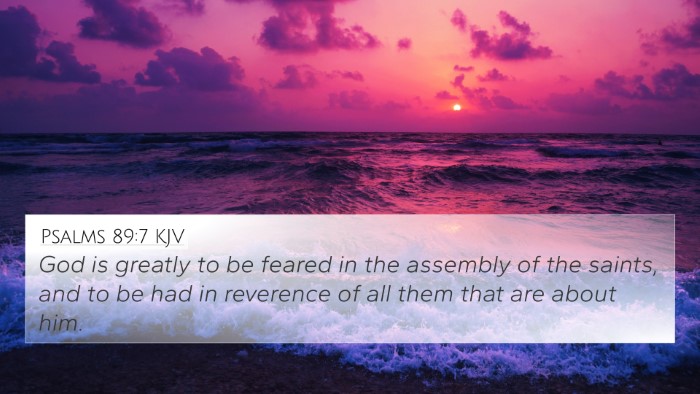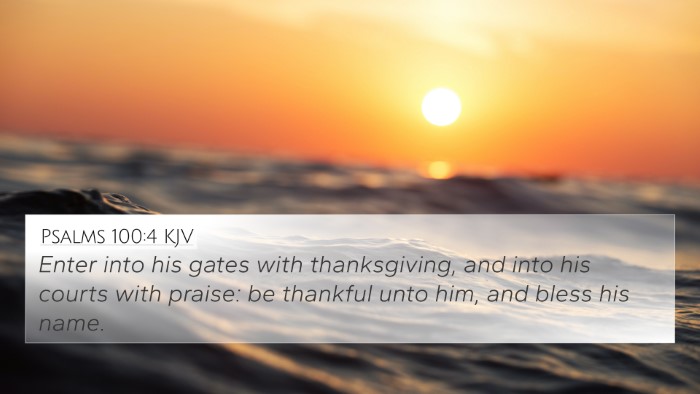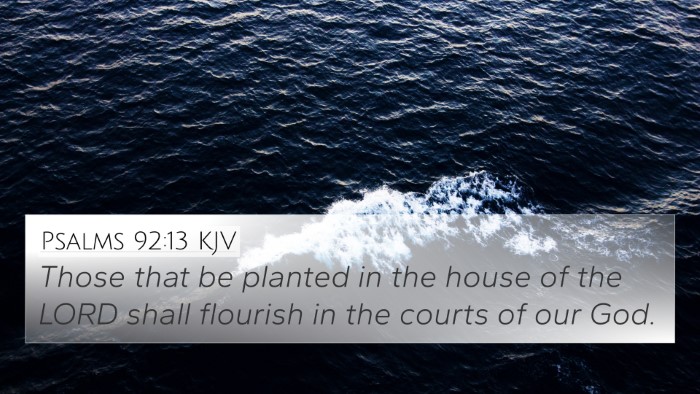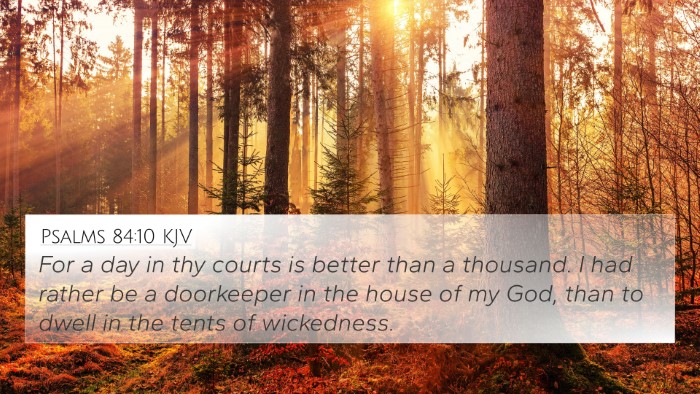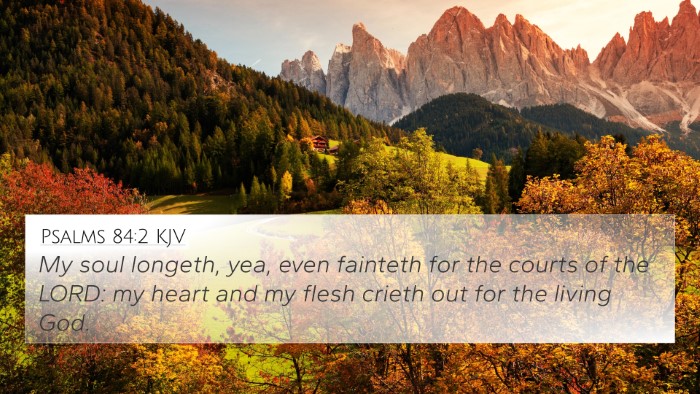Understanding Exodus 38:9
Bible Verse: Exodus 38:9 - "And he made the court; on the south side the hangings of the court were of fine twined linen, a hundred cubits."
This verse focuses on the construction of the tabernacle and its surrounding court, emphasizing the detailed care and specificity in God's instructions for worship and sacred spaces.
Overview of Exodus 38:9
The creation of the court surrounding the tabernacle signifies the importance of separation between the sacred and the profane. Its design elements reflect God’s holiness and the reverence required in approaching Him. The use of "fine twined linen" symbolizes purity, strength, and beauty, setting the stage for the worship that takes place within.
Insights from Commentaries
-
Matthew Henry's Commentary:
Henry notes that the "court" serves not just as a physical barrier but as a spiritual one, delineating where the Israelites could approach for worship and sacrifice. He emphasizes the meticulous way God outlined the tabernacle's dimensions and materials, reflecting His commitment to order and divinity.
-
Albert Barnes' Notes:
Barnes reinforces the idea of “fine twined linen” as not merely a material choice but a reflection of God's standards of excellence. He connects this to the overall theme of God demanding the best from His people in their worship and service to Him.
-
Adam Clarke's Commentary:
Clarke discusses the significance of the court in facilitating the physical gathering of the people in worship. He points to how the arrangement acted as an invitation to the Israelites to come near to God, yet also highlighted the need for separation from the unclean things of the world outside its boundaries.
Thematic Connections
Exodus 38:9 serves as a vital link in understanding the thematic developments throughout both the Old and New Testaments. This verse narrates a physical and spiritual preparation for divine presence, which continues to resonate in Christian theology regarding worship.
Cross-References for Further Study
To deepen your understanding of this passage, consider the following biblical cross-references:
- Exodus 26:1: Discusses the curtains of the tabernacle, aligning with the idea of separation.
- Hebrews 9:2: Mentions the "first tabernacle" that had a separation of the holy places, directly linking the concept of sacred space.
- Revelation 21:27: Speaks of purity and holiness, suggesting the ultimate sacred space in God’s presence.
- Leviticus 1:1-2: Outlines the offerings, physical events unfolding in the tabernacle court.
- Lamentations 2:6: Reflects on the desolation of sacred space when unfaithfulness occurs.
- Matthew 27:51: The curtain of the temple that separated the Holy of Holies, revealing God’s approachability through Christ.
- John 4:24: Discusses true worshipers worshiping in spirit and truth, connecting to the intent behind the construction of the tabernacle.
Comparative Analysis of Biblical Themes
This verse encourages a thematic Bible verse connection that pulls together various aspects of worship and divine interaction through physical spaces:
-
The Physical vs. the Spiritual: The court represents an essential boundary where physical actions (sacrifices) meet spiritual significance (God's presence).
-
Holiness and Purity: Much like the fine linen, the pursuit of holiness in life is a core theme that echoes through various biblical texts, reinforcing God's desire for purity in worshipers.
How to Study Cross-References Effectively
Understanding and using cross-references efficiently can enhance your biblical study. Here are some methods:
- Bible Concordance: Utilize a Bible concordance to trace keywords and themes from Exodus 38:9 to related verses.
- Chain References: Follow the thematic chain of Scriptures from the Old Testament through New Testament teachings.
- Comparative Studies: Conduct comprehensive studies comparing passages that relate to tabernacle worship and New Covenant interactions.
Conclusion
Exodus 38:9 is more than just a verse with practical instructions; it opens a dialogue across the Scriptures concerning God's holiness and requirements for proper worship. The careful crafting of the tabernacle reflects deeper spiritual truths relevant from the time of Moses to the present age of grace.
